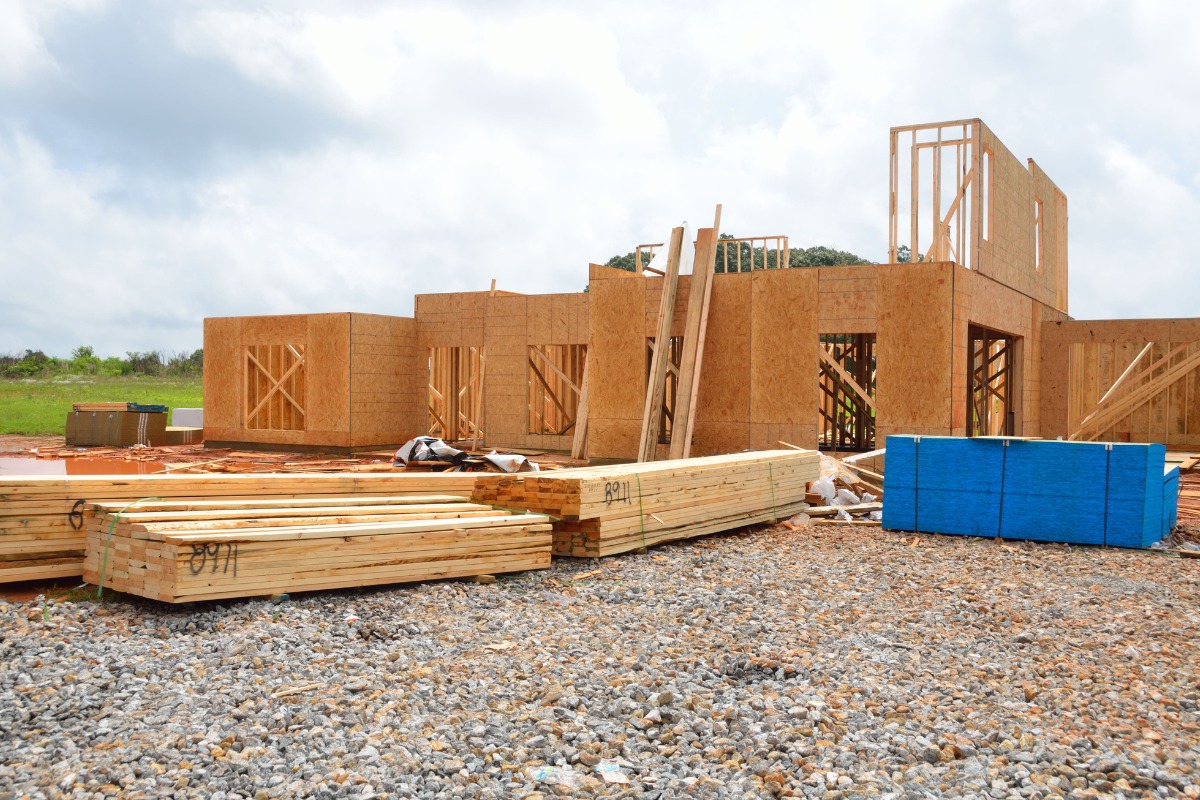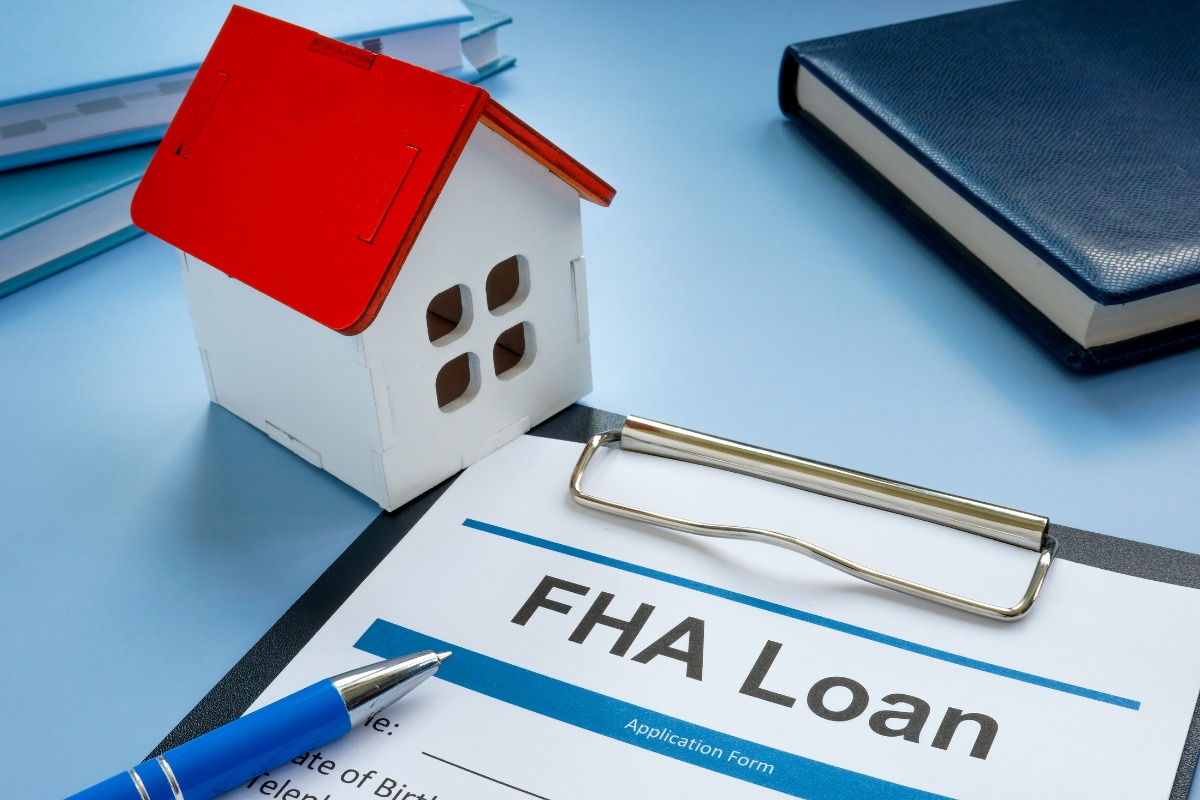Embarking on the journey of building your dream home can be as exciting as it is daunting, and we understand that the financial side of things often brings its own set of challenges. This is where FHA New Construction Home Loans play a pivotal role, offering a beacon of hope for many aspiring homeowners. Our commitment is to guide you through the nuances of securing new construction home loans with FHA—a government-backed solution that aims to simplify the path to homeownership.
Whether you’re starting from scratch or have your eye on a piece of land just waiting to be transformed, going the FHA route can provide the financial backing you need. These government-backed loans for new construction are designed with the borrower in mind, presenting an opportunity that may otherwise be out of reach, especially for those with less-than-perfect credit scores. Let’s unpack the essentials and lay the foundation for your successful application.
Key Takeaways
- FHA New Construction Home Loans provide comprehensive financing options for building or renovating a home.
- These loans accommodate lower credit scores and offer competitive downpayment options.
- Borrowers benefit from a single transaction that covers both the construction and permanent mortgage phases.
- FHA-backed loans are accessible and supportive, even in complex financial situations.
- Understanding the full scope of FHA construction loans is essential for a streamlined application and financing process.
- Our guidance intends to demystify eligibility requirements and showcase the tangible benefits of this financing path.
Understanding FHA New Construction Home Loans

For many Americans, building a new home is a significant milestone. Through FHA loans for building a new home, we see a path that may lead to achieving this goal with more accessible terms and conditions. These home loans for new construction under FHA guidelines provide unique solutions tailored to a diverse range of needs and financial situations. Let’s delve deeper into what these loans entail and how they can benefit potential homeowners.
What is an FHA construction loan?
An FHA construction loan is a government-backed mortgage designed to help individuals finance both the construction and purchase of a new home. Recognising the complexity and costs associated with building a property, the Federal Housing Administration offers these loans with less stringent qualifying criteria, making homeownership a reality for more people through FHA construction financing.
Differences Between a Construction-to-Permanent Loan and a FHA 203(k) Loan
Two primary types of FHA loans cater to construction-related projects:
| Loan Type | Purpose | Key Feature |
|---|---|---|
| Construction-to-Permanent Loan | New Home Construction | One-time close converts to a permanent loan after construction |
| FHA 203(k) Loan | Home Purchase and Renovation | Tiered options for minor or major renovations |
The construction-to-permanent loan is a single-close mortgage that simplifies the process by integrating the construction loan with the future permanent loan. This efficiency is particularly beneficial for those who wish to streamline budgeting and financing as they venture to construct their new residence. In contrast, the FHA 203(k) loan is versatile, offering financial resources for homebuyers focused on renovations, whether they are straightforward updates or comprehensive overhauls.
The Benefits of FHA-backed Construction Financing
When we consider the numerous advantages of these loans, it becomes clear why FHA construction financing is a popular choice. These benefits include lower minimum credit score requirements for eligibility, lower down payment options, and the security that comes from government backing. This support structure opens doors for a wider segment of the population to successfully undertake the construction of their new homes, fostering an environment where dreams of homeownership are much more attainable.
Qualifying for an FHA Loan for Building a New Home
Embarking on the journey of constructing a new home is an exciting prospect, and FHA financing for new home construction can make this dream a viable reality for many. The keys to unlocking this opportunity lie in understanding and meeting the eligibility requirements for FHA New Construction Home Loans, which encompass borrower’s guidelines set forth by the Federal Housing Administration.
Eligibility Criteria for Borrowers
To secure an FHA loan for the construction of a new residence, our first step is ensuring we align with the borrower’s criteria. We delve into factors like credit history, consistent income, and the ability to afford monthly payments, all of which contribute to a borrower’s eligibility profile.
Credit Score and Down Payment Explained
One of the compelling aspects of FHA loans is the lower credit score threshold for potential homeowners. With a minimum score of 500, we can qualify for an FHA loan with a 10% down payment. If our credit score reaches 580 or above, the down payment could be as low as 3.5%. These figures highlight FHA’s inclusivity compared to conventional lending models.
Understanding the Debt-to-Income Ratio for FHA Loans
A critical aspect of qualifying for an FHA loan revolves around our debt-to-income (DTI) ratio, a measure lenders use to gauge our ability to manage our monthly payments alongside our other debt obligations. Typically, the DTI limit for FHA loans is 43%; however, under certain circumstances, you could be approved with a DTI as high as 50%.
| Criteria | Requirements | Details |
|---|---|---|
| Credit Score | 500 minimum | Eligible for FHA Loan with 10% down payment |
| Credit Score | 580 minimum | Qualify for as low as a 3.5% down payment. |
| DTI Ratio | Maximum 43% | 50% may be accepted in some cases. |
| Loan Limits | Varies by region | Based on property type and locality |
As we fulfil these guidelines, we stand in a better position to pursue FHA borrower’s guidelines and FHA financing for new home construction. It’s our responsibility to fully understand and prepare for these requirements, as they will significantly influence the successful acquisition of an FHA New Construction Home Loan.
FHA Loans for Building Homes: The Approval Process

Embarking on the journey of financing a new construction project with the Federal Housing Administration (FHA) involves a multi-faceted approval process. As experts in the field, we understand that navigating through the various stages can be daunting. However, with the proper knowledge and guidance, securing new home loans with FHA can be a streamlined and rewarding venture. As we delve into the particulars of the FHA loan approval process, we’ll outline the crucial steps needed to transform your dream home from a blueprint to reality.
Initially, the process begins with procuring pre-approval from an accredited FHA lender, which sets the foundational stone of financial credibility. Next comes the crucial task of selecting your land, which not only serves as the canvas of your future home but also needs to meet specific FHA criteria regarding its location and safety standards. This compliance is indispensable to advancing to the subsequent stages.
After these preliminary steps come perhaps the most pivotal moment of the approval process: the choice of a licenced contractor. This ensures that construction not only meets the stringent construction standards set by FHA but also aligns with the highest level of workmanship and quality.
| Approval Stage | Requirements | Purpose |
|---|---|---|
| Pre-Approval | Financial assessment by an FHA-approved lender | Evaluate the borrower’s creditworthiness and establish a budget framework. |
| Land Selection | Compliance with FHA location and safety standards | Ensures the property is free of hazards and in a suitable location. |
| Contractor Selection | FHA-approved, licenced, and insured | Guarantees the use of professional services and adherence to construction quality. |
| Appraisal | FHA appraisal to ascertain the property meets minimum standards | Confirms the home’s value and ensures it meets FHA’s health, safety, and security requirements. |
| Loan Closing | Finalisation of loan terms with the lender | Secures the investment and formally initiates the construction project. |
| Construction Completion and Loan Conversion | Construction completion validated by the lender and transition to a permanent mortgage within 60 days | Shifts financial provision from construction to long-term residency |
Another pivotal part of the FHA loan approval process is the obligatory FHA appraisal. This is an unskippable step that ensures your forthcoming home meets all the minimum property standards laid out by the FHA. Following a successful appraisal, closing on the loan marks the culmination of the approval process, cementing your path towards homeownership.
Finally, the approval process converges with the real act of construction. Once the home is complete, the construction loan metamorphoses into your permanent mortgage, commonly within a 60-day framework. This transition is a crucial final step, often considered the tipping point for realising your homeownership dreams.
Throughout this intricate process, we pledge to support your aspirations, ensuring that financing options for new construction with FHA are comprehensive and within reach. Remember, it’s not just about securing a loan—it’s about laying the foundations for your future home.
FHA Financing for New Home Construction: Loan Limits and Insurance Premiums
As we navigate the nuances of securing construction loans for FHA borrowers, it’s essential to comprehend the financial parameters set by the Federal Housing Administration. The FHA establishes annual FHA loan limits that directly influence how much one can borrow for constructing a home. For the majority of locations, the 2023 limit stands at $472,030, whereas areas classified as high-cost can see limits soar up to $1,089,300. This variance ensures that borrowers across different markets can access the funds necessary for their home construction needs.
In addition to understanding loan caps, one must also consider the costs associated with FHA mortgage insurance premiums. These premiums are a safeguard for lenders, mitigating their risk and thereby allowing the continued provisioning of loans to a diverse range of borrowers. A compulsory upfront mortgage insurance premium is levied, calculated at 1.75% of the loan amount. Following this, an annual premium, ranging from 0.15% to 0.75% of the outstanding loan balance, is charged and typically distributed over monthly payments.
| Area Classification | FHA Loan Limit (2023) | Upfront Mortgage Insurance Premium | Annual Mortgage Insurance Premium |
|---|---|---|---|
| Standard Area | $472,030 | 1.75% of the loan amount | 0.15%-0.75% |
| High-Cost Area | $1,089,300 | 1.75% of the loan amount | 0.15%-0.75% |
By acknowledging these crucial financial components—loan limits and insurance premiums—we equip ourselves with a clearer understanding of the economic framework governing FHA-backed construction loans. This knowledge is instrumental in strategically planning our path to building a new home, ensuring our financial decisions are well-informed and aligned with FHA guidelines.
Choosing the Right FHA Construction Loan for Your Project

Embarking on a new construction project is an exciting phase, but it involves critical financial decisions. Among these is determining the appropriate FHA loan product that best suits your project’s needs. The Federal Housing Administration (FHA) provides distinct loan options designed to cater to various construction phases and renovation requirements. We will delve into a comparison of the FHA construction-to-permanent loan and the FHA 203(k) rehabilitation loan, along with the pros and cons of these financing avenues.
Comparing the construction-to-permanent loan with the 203(k) loan
The nuanced differences between the FHA construction loan options can significantly impact your project’s trajectory. A construction-to-permanent loan may be the ideal choice for constructing a new home from scratch, offering a seamless transition from the construction phase to a permanent mortgage. On the other hand, the FHA 203(k) rehabilitation loan is structured to finance both the purchase and renovation of a property, which can range from simple upgrades to extensive reconstructions. Examining the specific features of each loan can clarify which aligns with your unique home-building or renovation project.
Pros and Cons of FHA Financing Options for New Homes
When opting for FHA financing, borrowers appreciate the lower credit score requirement and the comprehensive funding solution provided by a single closing. Nevertheless, these options come with mandatory mortgage insurance premiums that must be calculated into the overall cost. To assist you in making an informed decision, we offer a detailed comparison of the advantages and drawbacks associated with each FHA loan product:
| FHA Loan Feature | FHA Construction-to-Permanent Loan | FHA 203(k) Rehabilitation Loan |
|---|---|---|
| Project Type | New home construction | Home purchase and renovation |
| Credit Score Requirement | A lower credit score is acceptable. | A lower credit score is acceptable. |
| Loan Structure | Combines construction funding with a permanent mortgage | Includes financing for both purchase and renovation costs. |
| Down Payment | As low as 3.5% for eligible borrowers | As low as 3.5% for eligible borrowers |
| Mortgage Insurance | Required, including upfront and annual premiums. | Required, including upfront and annual premiums. |
| Appraisal Requirements | Must adhere to FHA’s strict criteria | Must adhere to FHA’s strict criteria |
| Renovation Options | N/A | Minor (limited to 203(k)) and major (standard 203(k)) renovations |
In summary, a thorough FHA construction loan comparison can equip borrowers with the requisite knowledge to choose the right path. By evaluating your project’s scale, anticipated expenses, and readiness to fulfil FHA guidelines, you can opt for an FHA construction-to-permanent or FHA 203(k) rehabilitation loan that aligns perfectly with your objectives for building or rehabilitating your dream home.
Benefits and Drawbacks of FHA Construction-to-Permanent Loans
Exploring FHA loans for building homes, particularly the construction-to-permanent loan, we identify several distinct advantages. For many, the capacity to qualify with a lower credit score under these programmes provides a significant benefit. This flexibility opens doors to homeownership for those who might otherwise be excluded due to traditional lending standards. Furthermore, the streamlined nature of a single closing process reduces complexity and can potentially save time and money.
Another notable advantage of construction-to-permanent loan benefits is their adaptability to a wide array of homebuilding projects. Whether our goal is to construct a modest family residence or a more elaborate structure, FHA financing accommodates diverse construction goals. Yet, alongside these benefits, there are notable FHA loan drawbacks. Borrowers must prepare for long-term expenditure on mortgage insurance payments, which persist for the loan’s duration. Compliance with FHA loan amount limits can also pose a challenge, particularly in geographical areas where construction costs are high.
| Benefit | Drawback |
|---|---|
| Lower credit score qualification | Permanent mortgage insurance payments |
| Efficiency of a single loan closing | Compliance with FHA loan amount limits |
| Suitability for a variety of projects | Stricter property conditions and safety requirements |
It’s also important to address the approval process for these types of loans. With more stringent property conditions and safety requirement guidelines, the path to approval can be more cumbersome than conventional loan choices. Nonetheless, we recognise that these criteria serve to ensure the safety and habitability of homes financed under the FHA’s protective umbrella.
FHA 203(k) Rehabilitation Loans for Renovations and Remodels

For many of our readers looking to purchase a fixer-upper or renovate their current home, the FHA 203(k) loan options serve as a beacon of opportunity. The renovation loans with FHA allow you to finance both the home purchase and the subsequent renovations through a single mortgage, making the process more streamlined and less daunting.
We want to guide you through the FHA 203(k) loan process, helping you to understand the critical steps from the initial application to the thrilling moment when you can start your renovation work. The process is designed with the borrower’s needs in mind, ensuring that every improvement made aligns with FHA’s strict standards, thus protecting your investment and future.
| Type of FHA 203(k) | Maximum Repair Limit | Requires Consultant | Eligible Projects |
|---|---|---|---|
| Limited 203(k) Loan | $35,000 | No | Minor remodelling and non-structural repairs |
| Standard 203(k) Loan | No limit, subject to FHA guidelines | Yes | Structural repairs and significant renovations |
Whether you opt for the limited or standard variant, the goal is to transform a property into your vision of a dream home. It’s essential, however, to ensure that your projects align with the FHA 203(k) guidelines and are carried out by licensed contractors of high repute. From our experience, diligent planning and adherence to FHA’s standards pave the way for a successful remodel and steadfast improvements in property value.
The Role of Contractors in FHA New Construction Loans
When it comes to FHA new construction loans, the importance of working with FHA-approved contractors cannot be overstated. Our borrowers recognise the necessity of involving professionals who not only have the skill to bring architectural plans to life but also possess the credentials that FHA loans require.
Working with licenced contractors
For our projects to flourish and comply with FHA stipulations, we ensure all contracted builders are both licenced and FHA-approved. This is more than a formality; it’s a critical step in project approval for FHA construction loans. Clients trust us to partner with contractors who have an unblemished track record of meeting the FHA’s exacting standards for safety, quality, and fiscal responsibility.
Navigating Contractor Selection and Project Approval
Selecting the right contractor is pivotal—not only for meeting FHA guidelines but for the overall success of the project. Our process includes extensive vetting, examining verified credentials, and comparing previous work samples to predict future performance. Our meticulous approach to selecting contractors for FHA loans ensures each project’s smooth progression from initial approval to final inspection.
| Contractor Qualification | Importance | FHA Requirement |
|---|---|---|
| Licenced Professional | Ensures legal and professional standards | Mandatory |
| Insurance and bonding | Protects against unforeseen events | Mandatory |
| FHA Approval Status | Verifies eligibility to work on FHA-funded projects | Mandatory |
| Previous work quality | Reflects the contractor’s skill and reliability | Reviewed |
| Financial Stability | ensures the ability to sustain operations throughout the project. | Reviewed |
In conclusion, we are committed to working with FHA-approved contractors and providing guidance at every step of the contractor selection process. We understand that the backbone of a successful FHA construction loan application and the construction project itself is the reliability and qualification of the contractor at the helm.
Managing the Draw Process and Construction Timelines
Understanding the FHA loan draw process is crucial to successfully managing your construction project. We work closely with you to establish a draw schedule that supports the construction timelines with FHA loans. This ensures that the financial aspects of your project stay on track and construction milestones are met promptly. Below, we’ve detailed a typical draw process and the progression of construction phases to guide you through managing FHA construction loan draws.
| Construction Phase | Expected Draw | Key Actions and Milestones |
|---|---|---|
| Foundation | 10% | Laying of the foundation; initial draw disbursed to begin construction |
| Framing | 15% | Completion of the home’s frame |
| Roofing and Windows | 15% | Roof installation and window fitting |
| Interior and exterior finishing | 20% | Drywall, flooring, and exterior siding work |
| Final Finishing | 20% | Interior trim, painting, and installation of cabinets and fixtures |
| Site Work and Landscaping | 10% | Exterior grading, landscaping, and exterior amenities |
| Final Inspection and Completion | 10% | Final inspection approvals and resolution of any remaining items |
We must work in tandem with builders to uphold the integrity of these timelines. Regular inspections and transparent communication form the scaffold for a seamless build. The finale of this process results in a final inspection, after which your FHA loan transitions into a permanent mortgage, ushering in a new chapter as homeowners.
Transitioning from a Construction Loan to a Permanent Mortgage

Converting an FHA construction loan into a permanent mortgage is a pivotal step in the journey towards long-term homeownership. As we approach the completion of the construction phase, it’s crucial to outline the seamless shift from one type of loan to another. The FHA construction loan to permanent loan conversion is designed to transition smoothly, provided the newly built home meets all FHA guidelines.
Once construction is finalised, there is a window of up to 60 days to initiate the FHA permanent mortgage process. This transition involves converting the construction loan into a mortgage with a longer amortisation period, generally 15 to 30 years, with the conditions previously agreed upon with the lender.
During construction, interest payments are often interest-only to reduce the financial strain on homeowners. However, once the conversion is made, one can expect to begin making standard mortgage payments that include both the principal and interest components. Let’s look at the key elements to keep in mind for a successful FHA loan conversion:
- Ensure that the construction project aligns with FHA specifications and lender requirements for a hassle-free loan conversion process.
- Keep in contact with your lender to discuss any changes or updates that may affect your loan conversion, including timelines, interest rates, and payment schedules.
- Anticipate the payment shift from interest-only payments during construction to full mortgage payments post-conversion.
We recognise the importance of being well-informed about the FHA construction loan to permanent loan conversion process, so here’s a breakdown within a concise table:
| Construction Phase | Transition Phase | Permanent Mortgage Phase |
|---|---|---|
| Interest-only payments | The 60-day window for conversion | Standard mortgage payments commence. |
| FHA and lender guidelines adhere | Final inspection and appraisal | Loan terms extend up to 30 years. |
| Loan disbursements in stages | Conversion within 60 days of completion | Includes principal and interest |
By keeping these factors in mind and actively coordinating with the lender, homeowners can ensure they are on the path towards successful and secure homeownership with their FHA-funded construction project smoothly transitioning into a permanent mortgage.
Note: The above steps and timeline are subject to the terms and agreements set forth by the lender during the initial loan setup and may vary depending on individual circumstances.
Alternative Financing: Conventional, VA, and USDA Construction Loans
In our collective pursuit to acknowledge the realm of possibilities for home construction financing, we recognise that FHA loans are not the sole pathway available. As we discern the financing landscape, we also consider conventional construction loan options, VA construction loans, and USDA construction financing. These alternatives, each with their distinctive advantages, may complement the diverse financial situations of prospective homeowners. We must explore these avenues to ensure informed decision-making that could lead to more personalised and oftentimes beneficial terms for our new homes.
How FHA Loans Compare with Other Construction Loans
Our analysis tends to illustrate a contrast between FHA loans and other construction loan variants. FHA loans are known for their more lenient qualification criteria, particularly valuable for those with lower credit ratings. In juxtaposition, conventional loans frequently embody more stringent credit score demands but could potentially exempt borrowers from the obligation of carrying mortgage insurance. VA construction loans extend remarkable benefits to veterans and active military members, offering 100% financing without the requirement for mortgage insurance. Similarly, USDA loans present enticing opportunities for those looking to construct homes in qualified rural areas with the possibility of no down payment. Comprehensively examining these options about one another ensures that we leverage the best financing strategy for our situation.
Exploring state and local programmes for new construction
We must not disregard state and local programmes that aim to facilitate the journey towards homeownership, especially for individuals and families with lower incomes. These programmes often offer down payment assistance, tax credits, or specific loan products tailored to the demographic or economic needs of the community. Engaging with these resources can often supplement our primary loan options, making the financial hurdle of new construction significantly more manageable. Our collective effort to investigate and avail ourselves of these programmes could potentially lead us towards a more economically feasible blueprint for our new homes.
Alternative Financing: Conventional, VA, and USDA Construction Loans
What is an FHA construction loan?
An FHA construction loan is a government-backed loan programme that supports borrowers in building their dream homes from the ground up. It is designed to include the costs of purchasing land, funding construction, lender fees, and covering renovations for existing properties, all on one loan.
What are the differences between a construction-to-permanent loan and an FHA 203(k) loan?
A construction-to-permanent loan is suitable for new home construction, allowing borrowers to finance the land purchase and construction costs, which later convert to a permanent mortgage. The FHA 203(k) loan is geared towards renovations and repairs, with options for minor or major improvements on an existing property.
What are the benefits of FHA-backed construction financing?
FHA construction loans offer several advantages, such as lower minimum credit score requirements, smaller down payments, and the convenience of combining construction costs and a permanent mortgage into a single, streamlined loan.
What are the eligibility criteria for borrowers?
To qualify for an FHA new construction home loan, borrowers must meet certain eligibility requirements, such as a minimum credit score of 500 with a 10% down payment or 580 for a lower down payment, and a debt-to-income ratio usually not exceeding 43%. The property must also fall within the FHA lending limits.
How are credit scores and down payments related to an FHA loan?
For an FHA loan, the minimum credit score dictates the down payment amount required. A credit score of 500–579 requires a 10% down payment, while a score of 580 or higher enables the borrower to make a down payment as low as 3.5%.
What is the significance of the debt-to-income ratio for FHA loans?
The debt-to-income (DTI) ratio is a measure of a borrower’s monthly debt payments compared to their monthly gross income, and it is used to assess loan affordability. For FHA loans, a DTI ratio of up to 50% may be approved under certain circumstances, though it typically should not exceed 43%.
What are the steps in the approval process for an FHA loan for building homes?
The approval process includes obtaining pre-approval from an FHA lender, choosing eligible land, selecting a licenced contractor who meets FHA standards, undergoing a mandatory FHA appraisal, and closing on the loan. This is all done to ensure compliance with FHA guidelines and successful funding for home construction.
What are the FHA Loan Limits and Insurance Premiums for New Construction?
For 2023, FHA loan limits for most areas are set at $472,030, with higher-cost regions at $1,089,300. Borrowers are required to pay mortgage insurance premiums, including an upfront fee of 1.75% of the loan amount and an annual premium that ranges between 0.15% and 0.75%, which lasts for the duration of the loan.
How do I compare the construction-to-permanent loan with the 203(k) loan?
To choose between a construction-to-permanent loan and the 203(k) loan, consider your project’s scope. The former is ideal for new construction, while the latter fits renovations. Analyse the pros and cons, like credit score flexibility and mandatory mortgage insurance, to determine the best fit for your needs.
What are the pros and cons of FHA financing options for new homes?
FHA financing for new homes provides accessible entry with lower credit scores and a single-close approach, but it also requires ongoing mortgage insurance premiums and compliance with FHA appraisal standards, which might be more rigid than conventional loans.
What are the advantages and disadvantages of FHA construction-to-permanent loans?
The advantages include lower qualifying credit scores, a single closing process, and versatility for different types of construction projects. Disadvantages involve upfront and ongoing mortgage insurance costs and adherence to FHA loan limits and property standards.
How does the FHA 203(k) Rehabilitation Loan work?
The FHA 203(k) loan facilitates the financing of both the purchase and renovation of a home under a single loan. There are two types: limited for renovations up to $35,000 and standard for more extensive remodels, which require the services of a 203(k) consultant.
Why is working with licenced contractors important?
Working with licenced contractors is integral to FHA new construction loans because they must meet FHA guidelines and be able to provide documentation of their credentials and insurance. They play a key role in the approval process and building the project to FHA standards.
How Do I Navigate Contractor Selection and Project Approval for My FHA Loan?
Select a contractor who is FHA-approved and can meet lender requirements. Their bid on your project forms part of the loan application, and project approval hinges on the contractor’s ability to fulfil the terms of the loan, including budget, construction standards, and timelines.
What is the Draw Process for FHA Construction Loans?
The draw process involves step-by-step funding releases to the builder as construction milestones are achieved. Lenders distribute payments based on an agreed schedule, which ensures that funds are used appropriately throughout the construction phase.
How Does the Transition from an FHA Construction Loan to a Permanent Mortgage Work?
After home construction is complete and meets FHA standards, the loan automatically converts into a permanent mortgage within 60 days. Payment terms, usually 15 or 30 years, begin, encompassing principal and interest on the completed home.
How do FHA loans compare with other construction loans?
FHA loans generally offer easier qualifying criteria but come with mortgage insurance requirements. Conventional loans may avoid mortgage insurance with a higher down payment. VA and USDA loans offer benefits like 100% financing for eligible borrowers but have specific eligibility requirements.
What are the state and local programmes for new construction?
State and local programmes may offer additional resources for new construction, such as down payment assistance or specialised loan programmes targeting low-income borrowers, providing further support alongside federal financing options like FHA.

